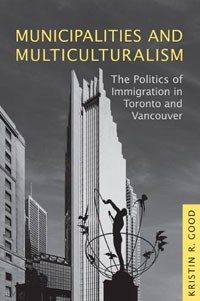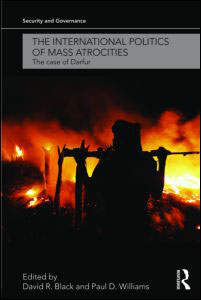This year’s crop of over 50 published works by members of the Faculty of Arts and Social sciences was put on show recently. Here’s a look at five of the new releases:
***
|
Pitch: Coming up to its 100th anniversary of publication, this is the first scholarly edition of Tarzan of the Apes in years. Earlier editions tended to gloss over issues of race and gender. This scholarly edition addresses and contextualizes the problems in Burroughs’ novel.
Digested read: Boy scouting, body building, back to nature movements. Burroughs was a successful pulp writer because he captured the trends of his time. He developed a new type of white masculinity tied to these movements. This racist machismo is, obviously, incredibly problematic. For example: Tarzan rescues Jane from a marauding ape. Heaving bosoms! Primordial desires! Sometimes, it’s hard to read the book with a straight face.
Haslam on Haslam: “A lot of the novel’s original readers were quite upset with the ending where Tarzan leaves Jane.”
***
|
Pitch: Municipal governments play a greater role in the area of immigrant settlement now. Given Toronto and Vancouver’s similar level of diversity, why do some of municipalities develop multicultural initiatives and others do not?
Digested read: Ironically, Canada is viewed as a model of integration, but where it matters most — on the ground — local governments struggle without money or mandate. Some have good multiculturalism policies, like Toronto. Others don’t, like Mississauga. Resources matter, but cities are cash poor. While anti-immigrant backlash is negative, such crises force city councils to act. Community debates ensue. Local governments need to get with it and become multicultural policy leaders.
Good on Good:¬Ý ‚ÄúYou need a government there on the ground to be tailoring multicultural initiatives to the social context.‚Äù
***
|
Pitch: Essays examine responses to the humanitarian crisis in Darfur. Compares responses within the region, but also from major players in Africa and in the West. David Black co-wrote the introduction and conclusion and authored an essay on the Canadian response.
Digested read: Canada has a chronic foreign policy problem. We’re high-minded. We played a pivotal role determining how the world ought to respond to mass atrocity. We call it “the responsibility to protect.” Problem: we don’t invest in this strategy. The Liberals talked, but didn’t do much. The Conservatives, we’re not even really sure about the advocacy part anymore. Shame, because we could have taken a principled stand in Sudan.
Black on Black: “This government (in Canada) has been much quieter about both African issues in general and the responsibility to protect specifically.”
***
|
Pitch: Sounds like a bodice-ripper, but it’s about how readers have expectations of a given genre—romance—and how those expectations shift over time. Originally, romance referred to a variety of French spoken in Northern France and ended up as stories about knights and ladies.
Digested read: Only a few people read. Most listened. Those who read—like monks— read the hot stuff other clergy publicly denounced. When it came to love, the English preferred Tristram and Isolde, a story about sociopathic lovers and incestuous sex. In the end, the church thought it safer if the masses read more romances, less bible. Fewer arguments that way. Thus, the romance went mainstream.
Furrow on Furrow: “There was a deep-running fear in medieval culture of reading turned over to the common people who don’t have the training and might not be equipped to handle it.”
***
|
Pitch: The Safavids dynasty (1503-1736) is known for introducing Shi’ism to Iran. Today Iran is 90 per cent Shi’ite Muslim. This book tracks the evolution of Iran as a shi’ite land through diplomatic letters with other states.
Digested read: Maybe you think Iran is conservative and extreme. Let’s turn that notion on its head, shall we? The current Iranian government loves the Safavids but they ignore historical reality: Safavid Iran was a broad-minded mix of mystical Sufis, Sunnis and even fans of old school Persians like Cyrus and Darius.
Mitchell on Mitchell: "My interpretation does not mesh easily with how the Republic of Iran sees its own history."





